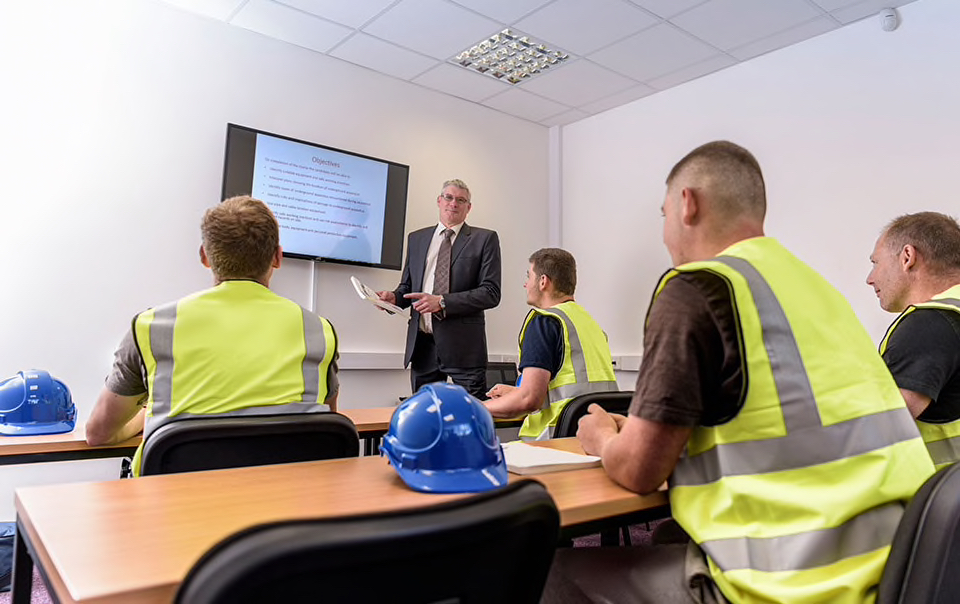Promoting a safe workforce can begin long before new construction workers arrive for their first day on the job site. Having a formal hiring and onboarding process can help ensure that employees are properly trained to perform their required duties safely. Travelers offers ways that construction companies can hire and onboard construction workers into a culture of safety.
During the Hiring Process
- Create detailed job descriptions. To help attract the right job candidates, create a well-documented job description that details the requirements of each job, including physical capabilities. This can help give prospective employees a more realistic picture of the job-related functions of the position.
• Ask behavioral interview questions. Conduct a formal interview process, complete with behavioral interviewing questions, to determine whether the candidate fits the organizational safety culture and core values of your company.
• Conduct post-offer functional capacity exams. Post-offer physicals and drug tests can help evaluate the physical fitness and capability of candidates to perform required duties. A physical exam can also be useful in documenting a baseline for new employee’s existing health (e.g., pre-existing hearing loss) before starting the job.
Onboarding and Continuous Training
The onboarding process should involve more than a one-size-fits-all approach, such as a general video presentation about safety practices at construction sites. All sites are different and have a unique set of risks. Creating a site-specific training for workers helps orient them into a safety culture and shows that the company values their continued safety, health and wellness.
- Tailor safety practices to specific projects. What are the specific safety concerns of your job site? What hazardous materials or special equipment present require specialized training? Beyond a general safety overview, creating an orientation based on your workforce will help workers engage with and retain safety information.
- Pay attention to new workers. Fifty-two percent of all injuries occur within the first year of employment. Differentiating newer workers with different colored hard hats helps project supervisors and other more seasoned workers to watch out for them and offer context-specific safety guidance. Creating a culture where workers learn from one another can help encourage workers to keep other workers safe.
- Investigate accidents. Thorough accident analysis can help identify important areas for improving safety procedures and training. Construction companies can discover the root cause of the accident, devise corrective actions that can help prevent another accident in the future, and continuously improve safety management practices.
- Make training an ongoing process. Training is not just for new workers. While the majority of Travelers’ workers compensation claims involve employees who were on the job for less than three years, an injury can happen to workers of any tenure. As work sites evolve, offer refresher courses for existing employees to help set expectations for safe behavior.
From finding the best candidates to keeping them safe throughout their tenure, construction companies can play a hands-on role in making safety a priority.








